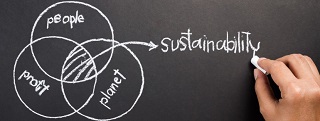Waste-to-Energy Highs and Lows

Here’s a conversation I’m having with my colleague Jerry:
Jerry: I’m guessing you have other w2E deals to bring forward.
Craig: Actually, no, I actually don’t have any other contracts in this space with projects I deem legitimate, but I can develop them in a hell of a hurry, once we get a deal closed. I know EXACTLY how to do this. There’s a brilliant guy out here in CA who used to work for me whom I can hire to ferret out deals. He’s incredibly good at this. I’ll use the first significant chunk I take in to hire him to work with me to find every deal in the country that’s worth pursuing.
Jerry: Sounds great.
Craig: I also have to come up to speed on the science here. I’m a physics guy, not a biochemist. I need to be able to sort out the bulls**t, and there’s plenty of it in this industry.
Jerry: You mean there’s more BS in this particular sector of renewables?
Craig: Absolutely. The chemical side of the renewable energy market (W2E, biofuels, biomass) is far more prone to bulls**t, in the form of exaggerations, technobabble, and outright lies than the physics side (solar, wind, geothermal and hydrokinetics).
This is because the physics side either works or it doesn’t; it has fewer “moving parts,” and the principles are simple and well-understood. The chemical side is a collection of gray areas; some of these processes work only with perfect feedstock in perfect climates that don’t exist in the real world. Others work great for a week before the entire plants breaks down. If someone tells you that a certain MSW (or whatever)-to-energy technology represents a breakthrough, it’s almost impossible to know how excited about it you should be about it. I don’t aspire to become an expert here, but I would like to make a quantum leap in my knowledge base.
Jerry: Well, cool. Let’s get ‘er done.

Craig,
I wish you and your clients the very best of good fortune. W2E is a very difficult technology to make commercially viable.
In the UK we built a bio-reactor on my family which although successful for a number of years now in the producing of power from agricultural waste, is not really commercially viable. The project has certainty been a very satisfactory learning experience, but I would recommend it as a business proposition.
An analysis of over 1000 projects dealing with waste to energy reveal only 2% as having any real financial credibility, and most rely on some form of government subsidy.
Like many clean technologies, niche markets exist where these technologies can be useful on a localized scale., especially where they can assist in solving other associated problems.
But good luck in your endeavors, I look forward to reading of your success.
W2e is great if mastered. There isn’t really much to lose since it uses the unusable parts of our food and waste. I think that it would be a great investment since it, hypothetically, works and shouldn’t be too expensive.